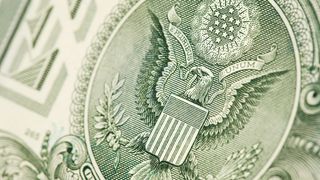Dichotomies are intellectually seductive, making a complex world easy to navigate. Good and bad, left and right, or – as we often encounter in debates about Australia's future – values versus interests, or the United States versus China.
Therefore, it was striking to see the headline on Professor James Laurenceson's article in these pages on Thursday, that "Australia's destiny is China, not America," a response to the United States Studies Centre's report documenting the depth and value of Australia's investment relationship with the United States.
Our trade with China is valuable on the balance sheet, but shouldn't be equated with the nation-building legacy of decades of "here-to-stay" direct investment, with the United States providing the lion's share.
Lets start with facts that are not in dispute. Australia racks up an impressive trade surplus with China, $22 billion in 2016. The United States is Australia's largest investment partner, with a cumulative stock of inward investment valued at $861 billion in 2016, about 10 times China's cumulative investments in Australia.
Direct investment – taking more than a 10 per cent ownership equity stake in an enterprise – is widely considered the most valuable type of foreign investment, a signal that an investor is here to stay. Vivid examples include Exxon's development of the Gippsland Basin, Boeing's 27 facilities across Australia, or Chevron's participation in the Gorgon gas project.
Who has the most investment?
In 2016, $11 billion of new US-sourced direct investment came to Australia. Cumulative US direct investment in Australia totalled $195 billion in 2016. By contrast, China's cumulative direct investment in Australia is just a fifth of the US total – $42 billion in 2016, with $3.4 billion arriving in 2016.
Laurenceson notes that total investment from the United States fell in 2016. But take a closer look. Direct investment was up, but US portfolio investment fell by $30 billion – just 5 per cent of the massive stock of US portfolio holdings in Australia. The same year, Chinese portfolio investment in Australia fell by $4 billion, but that was 25 per cent of Chinese portfolio holdings here.
There is simply no substitute for the depth of US capital markets and the well-oiled connections between the Australian and US financial services sectors.
But above all, we shouldn't equate trade dollars with investment dollars, and direct investment in particular. Our trade with China is valuable on the balance sheet, but shouldn't be equated with the nation-building legacy of decades of "here-to-stay" direct investment, with the United States providing the lion's share. Nor should our exports to China – tilted heavily towards resources, agricultural products, undergraduate commerce degrees and inbound tourism – be equated with US sourced investments in technology-rich sectors that continue to grow Australia's stock of human capital and technological capacity.
US firms spend close to $1.5 billion each year on research and development in Australia and the average annual salary of the 335,000 Australians employed by US firms is about $115,000. Australia's ability to rack up trade surpluses with China rests in no small way on the industrial and technical capacity built up by decades of foreign investment, the US being the single largest source.
Outbound investment
A major focus of our report is the outbound investment relationship. The United States is the largest destination of Australian foreign investment, amounting to $617 billion in 2016, $119 billion of that classified as direct investment. Australian superannuation funds have sought out yield and diversification via portfolio investment in the United States. Portfolio investment into the US grew by $24 billion in 2016, taking the cumulative total to $379 billion.
Australian investment in China totals $88 billion, with portfolio investment amounting to $12 billion, or a mere 3 per cent of the comparable figure for the United States.
Australian investment in China totals $88 billion, with portfolio investment amounting to $12 billion, or a mere 3 per cent of the comparable figure for the United States.
Our study also looked at the vital role of US capital markets in the Australian economy, providing liquidity and security to the Australian financial services sector and their customers, Australian firms and households. Laurenceson ventures that debt markets elsewhere in "would all welcome increased Australian business." No doubt, except that Australian seekers of capital overwhelmingly favour the United States. There is simply no substitute for the depth of US capital markets and the well-oiled connections between the Australian and US financial services sectors.
Being a liberal democracy matters – a lot
None of this is an accident. There are lots of destinations for capital in a globalised economy. Investment doesn't come here just because the weather's nice. Australia, like the United States, is a liberal democracy, committed to the rule of law, secure property rights, limits to state power, and procedural fairness.

As in the United States, our forebears made credible commitments to these institutions and successive generations have stuck by them. That's why so much American capital comes here; and why so much Australian capital goes there.
On the other hand, just a few pages away from Laurenceson's article on the same day – The Australian Financial Review's property editor Matthew Cranston lamented a systematic lack of transparency in Chinese investment in Australia and, by the way, Australia's collective reluctance to address this fact. Our destiny, indeed.
This is why the values-interests dichotomy in conversations about Australia's future is so muddle-headed. Our democratic values are not mere slogans. These values are our interests, made manifest in democratic institutions that are key to our prosperity, to our place in the global economy and to the deep and valuable investment relationship between Australia and the United States.






